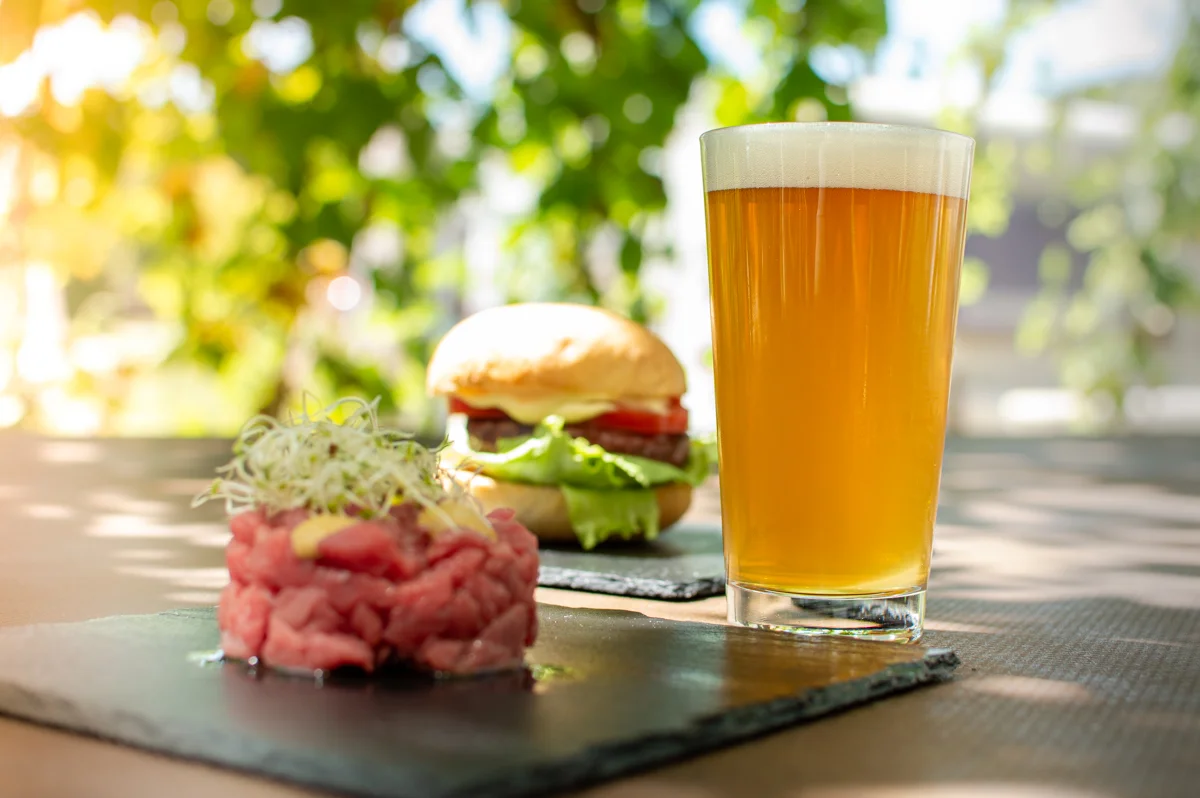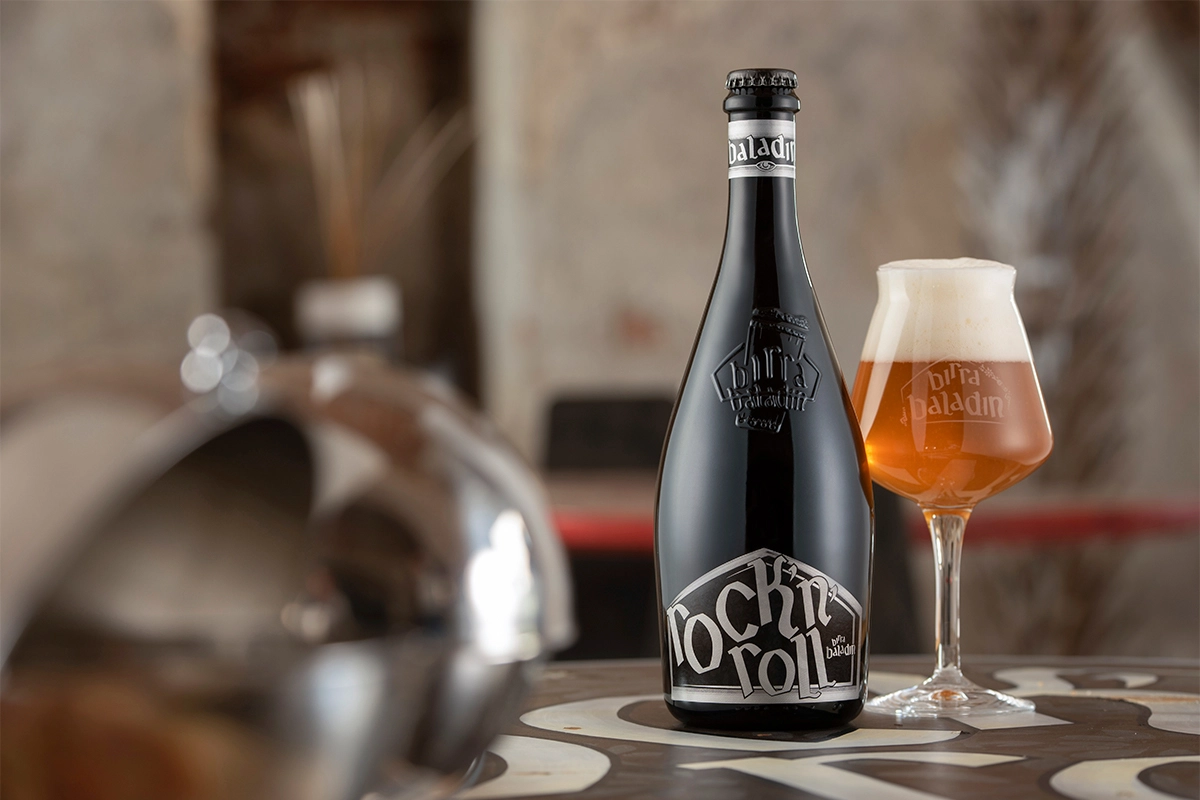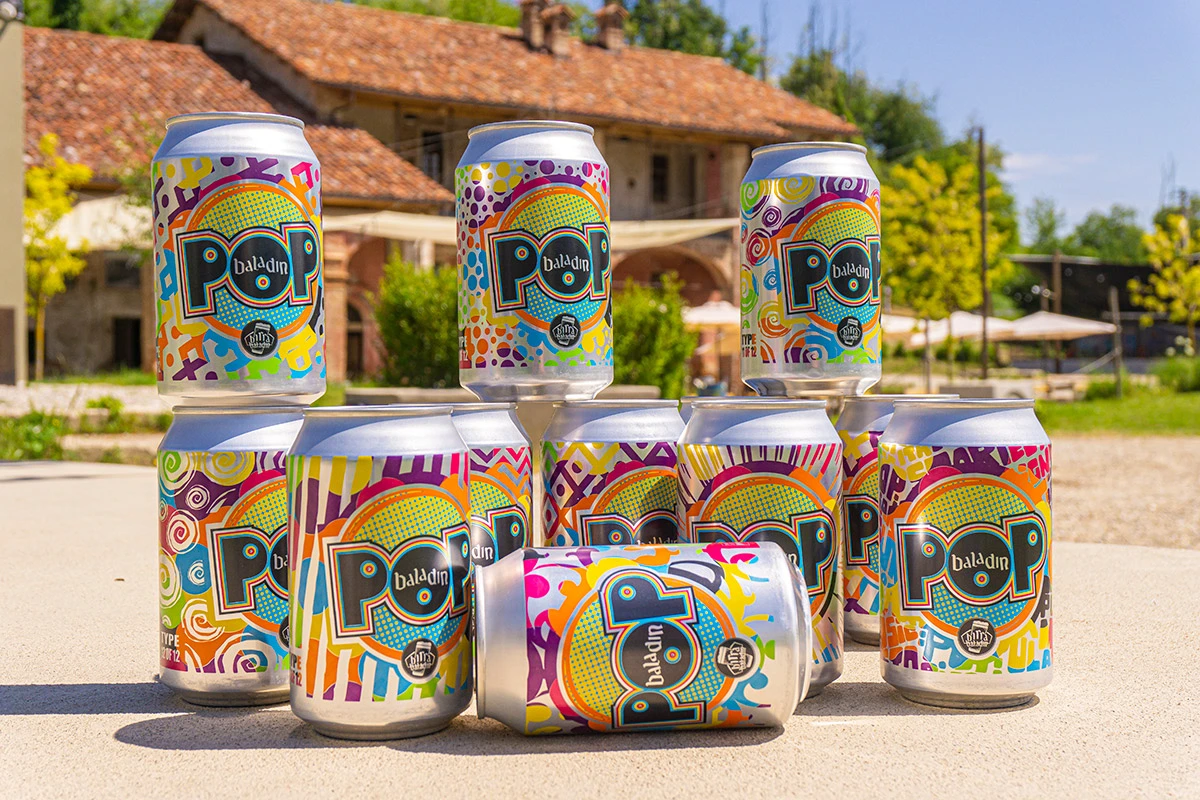Food and beer pairings: let’s talk about American Pale Ales

One of the most intriguing aspects of food pairing is that it is not an exact science: it’s an art, where intuitions and deductions are always subject to the unquestionable opinion of our taste buds, which can confirm or refute them.
SUBSCRIBE TO BALADIN NEWSLETTER
Food pairings for APAs and IPAs: mission impossible?
It is often believed that successfully pairing food with beers made with American and Pacific hops is difficult: they are particularly bitter, with citrusy, tropical, and resinous scents... APAs and IPAs have a strong character and they certainly don’t go with everything.
Some pairings are a big no-no. For instance, they don't go well with fat fish like red mullet or salmon. Their fatty acids, combined with the fragrances of the hops from the Pacific coast, release unpleasant metallic and soapy tastes that ruin both the food and the drink.
But there’s a positive side, too: the blunt and uncompromising personality of very hoppy beers is a challenge when it comes to food pairings. But when the challenge is won, it makes it so much more rewarding and satisfying.
First, it’s important to open our mind to new tastes and concepts. True, it is not that straightforward to find traditional Italian dishes that can go well with APAs and IPAs, but the solutions are there and can be found gradually, starting from where these beer styles originated.
Food and beer pairings: India Pale Ales
IPAs originated in the 18th century in England with the name October Ale. Their success in the “pearl of the British empire” changed their name into India Pale Ale. It won’t come as a surprise, then, that this beer style - including its modern versions that often contain American hops - goes wonderfully with typical Indian dishes.
The bitter taste, the alcohol content and the carbonation contrast nicely the fatty sweetness of ghee - the clarified butter that makes curries and fried vegetables so luscious and enveloping. The notes of citrus or ripe fruit coming from the hops, instead, are consistent with spices such as lemon grass, fresh coriander and asafetida.
In case of hot dishes, they can be counterbalanced by the malty component - especially in traditional English IPAs - with its biscuity sweetness. The citrusy and resinous fragrance given by the hops from the Pacific coast, instead, is pure fuel which emphasizes the hot fire in your mouth.
We will choose a different IPA based on the effect that we want to achieve: smoother and maltier to tone down the spiciness, drier and more bitter to bring it out even more.
Thai, Vietnamese and Sichuan dishes are also a good combination for these beers. By analogy, we can easily think of some hot Italian dishes, such as spaghetti with oil, garlic and chili, or “cacio e pepe” (pecorino and pepper) pasta, or ingredients such as the hot ‘nduja spreadable pork sausage.
We can also give a chance to carbonara pasta. Mixologists pair it with Negroni, but an IPA with a good malty base can have the necessary depth and structure to contrast the fattiness of the dish and support the taste of roasted guanciale.
Food and beer pairings: American Pale Ales
APAs, instead, come from California and have a fatal attraction for Mexican food. The lime juice and cilantro used in the sauces eaten with tacos, burritos and enchiladas are similar to the citrusy notes of the hops. The bitterness contrasts the fattiness of the avocado, beans and melted cheese. The malty component balances the acidity of hot Mexican dips made with tomatoes, onions and chili.
Californian brewpubs often serve APAs with burgers - a pairing that can become special if the condiments echo the scents and tastes of the hops found in the chosen beer. Lime mayonnaise or a slightly hot mango sauce, for instance, are perfect to create a magic combination.
Similarly, roast or fried chicken or a beef steak can be ideal companions for our favorite hoppy beer if we just add an ingredient that creates a connection to the beer: finely chopped sage, zest, garlic and rosemary to season the chicken, a citrusy aiöli used as a dip for fried chicken chunks, or a generous sprinkle of Sichuan pepper on a steak.
If in doubt, let’s listen to our beer. It will give us the answer.





